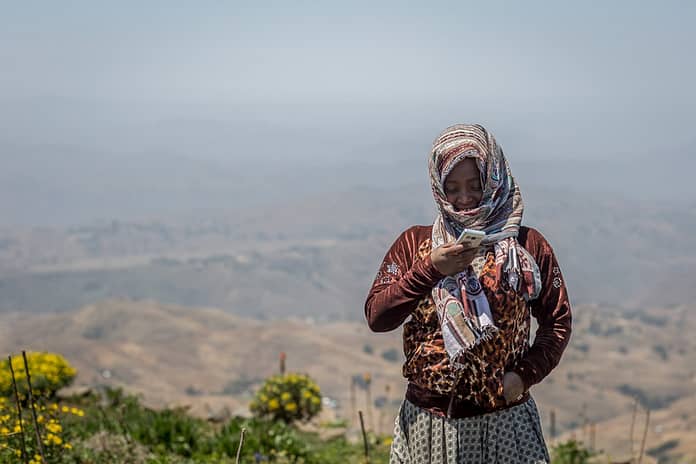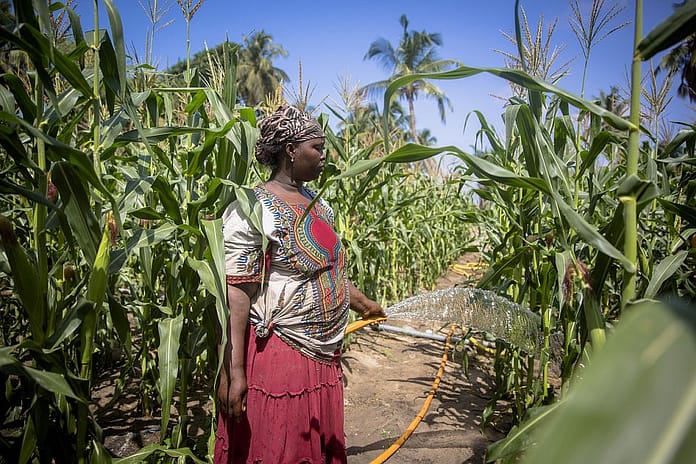“water infrastructure… produces new kinds of spaces and reproduces inequalities or differences between them” (Guerrero, 2018)
By Deepa Joshi, Amina Dessouki and Nisreen Lahham, IWMI

Only 4% of Egypt’s arid landscape is cultivable. Irrigating this land mass requires a disproportionate 86% consumption of the country’s total available fresh water (FAO, 2016). Irrigation efficiency in the country’s water resources management was necessitated by the introduction of cotton by the colonial British administration, which was a turning point in the country’s agrarian political economy.
Significant investments have been made in Egypt to establish a complex network of fresh and drainage canals, which achieve a high irrigation efficiency of around 86% (FAO, 2016). Drainage water is reused around five times in downstream irrigation plots. At the tail ends of the drainage canals, the reuse water mixes with treated and untreated domestic and industrial wastewater creating poor quality of irrigation water. Policy regulations disallow irrigation with untreated wastewater, but this is the only type of irrigation water accessible to small tenant landholdings at the tail ends of drainage canals.
A CGIAR GENDER Platform supported project linked to the IWMI’s Rewater-Mena project aimed to analyze the gender-power dynamics of irrigation at the tail ends of the drainage networks. We interviewed 150 female and male irrigators at the tail ends of the highly polluted Kitchener Drain (also known as Drain Number 7) and conducted in-depth case study analysis with 9 respondents to understand the spatial and socio-political dimensions of fresh and drainage irrigation systems, water and agri-food systems governance, and women’s increasing work in irrigated agriculture in the face of a persisting patriarchy.
The tail end of Drain 7 includes many smallholdings measuring 1-3 acres (or feddans). Known during colonial times as izbas, these were rented out to peasant farmers and laborers working on large cotton plantations – to grow food. Water scarcity and low productivity, as well as (perceived) health risks in cultivating these plots has led the plot owners to sublet the landholdings on tenurial sharecropping arrangements to landless households. Poor women are often primary farmers and irrigators on these plots, even though tenancy agreements are usually in the names of their husbands. To access extension services and training, loans, and credit facilities as members of the agricultural cooperatives one must be a registered landowner, the same applies to membership of the water user associations. Women farmers and tenant farmers are thus excluded from these facilities.
Not all tenant farmers are as vulnerable as Firdous. But many of the poorest women marry elderly poor men. Struggling to meet domestic and increasing productive roles, women often form a ‘comradery’ system to contribute labor in each other’s fields. This strengthens social bonding but rarely creates the collective bargaining to demand better tenurial arrangements or access to better quality water. Our research shows that irrigation gains are relative to location, access to infrastructure, social connections, and abilities to invest and/or negotiate. Tenant farmers often cultivate the least productive agricultural plots. Women’s labor on these plots has little value, as income is rarely generated, and the produced food is not desirable for consumption.
Sara, another female irrigator/ farmer says, “…if we can… we get rid of our crops and buy from outside”.
Women’s increasing roles in irrigation in Egypt, as well as across the MENA region cannot be viewed in isolation of women’s domestic care work. In the tail end regions of Drain 7, we met many overworked women exposed to multiple risks – they stay alive, “living in a permanent state of injury” (Mbembe, 2019).
Our study recommendations are aligned to the current National initiative, Haya Karima, which recognizes putting human wellbeing, dignity, and rights of Egyptian citizens above all other goals. The project findings call for a more deliberate focus on improved access for women to agriculture subsidies, credits, and extension, as well as more investments in social protection, including less punitive sharecropping arrangements. More nuanced analyses of the complexities of women’s lives, their increasing productive work, and the choices marginalized women have (or do not) needs to be better understood in planning agriculture and irrigation improvements. These together with interventions for equitable distribution of fresh water– are some of the changes needed urgently in Egypt’s irrigation and agriculture ambitions.
















